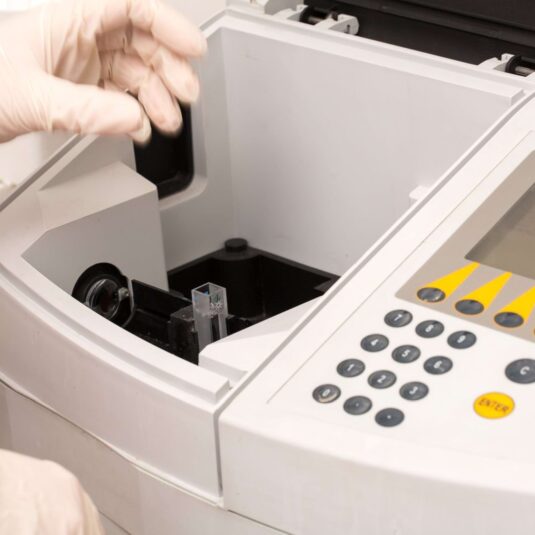Four Steps To Identifying The CDMO Proposal Worth Signing
Mabion

When a biotech’s team begins the search for a manufacturing partner to develop their biologic, a contract development and manufacturing organization’s (CDMO) proposal is typically their first insightful glimpse into the offerings, capabilities, experience, and facilities of a potential partner. Navigating these crucial technical and financial decisions takes knowledge that only comes from experience, which might be a challenge for sponsors who haven’t yet taken a drug to clinical trials. If you’re hoping not to figure out what makes a good CDMO proposal the hard way, i.e. by working with a CDMO that fails to deliver on their promised cost, quality, and timeline, it is best to familiarize yourself with the proposal process as well as the red flags and green flags to look out for. Taking the time to get better acquainted with the process can yield major benefits for your product.
Step 1. Familiarize Yourself with the Process
The first step to receiving a CDMO proposal is requesting one. Your request for proposal (RFP) should be as thorough as possible to help ensure that the proposals you receive in response contain all critical information needed to decide. If you’re not sure how best to design your RFP, consider working with a CDMO that provides a proposal questionnaire to help guide and build out your path to manufacturing. Once you submit an RFP to a CDMO, their business development, quality control, quality assurance, regulatory, and operations teams should review it. Ideally, they will follow up to ask clarifying questions and gain further insight into your goals; this helps guarantee that all stakeholders are on the same page. Your best-case scenario is a CDMO that responds quickly, poses thoughtful questions to your RFP, and encourages you to examine manufacturing opportunities and variations that you may not have previously thought of.
From there, a CDMO will strategize to assess all key quality, operations, regulatory, and financial angles to ensure your project is feasible for their team. If deemed a good fit, they’ll collaborate across departments to draft a proposal that thoroughly details the timeline, costs, and deliverables of your project that is then reviewed and approved by their leadership team. From receipt of the RFP, a rapid proposal turnaround time is 10 business days; the industry standard is approximately 15 business days. This varies depending on the project scope and the thoroughness of the RFP. Once all your CDMO proposals are in hand, it is time to make some comparisons. If your team is relatively inexperienced in this arena, you can opt to hire an external consultant who is knowledgeable in CDMO proposal assessment to help you identify what you’re looking for in a partner.
Step 2. Recognize the Red Flags
While price may be the first point you are drawn to consider, it’s important to recognize that the lowest sticker price is not necessarily the best or most accurate choice. Does a CDMO provide a thorough breakdown of the costs of supplies, materials, and labor per each part of your requested process? If not, their number could be an inaccurate estimate that fails to account for risks, delays, or failures, or even everything your team detailed in the RFP. To that point, determine whether a CDMO has generated a unique proposal tailored to the needs of your project or a generic cost sheet that uses ballpark figures and timelines based on previous projects.
Just as the lowest cost can be a red flag, so too can the fastest timeline. For example, if a CDMO promises the quickest turnaround, they’re likely not guaranteeing the highest quality product or they may be assuming a riskier approach to completing the project. An experienced quality team will assess qualitative and regulatory risks in the project. Based on their evaluation, the operations team will devise a project schedule to mitigate the identified risks. Alternatively, a clear indication can be provided about the implications of accelerating work, as it may be associated with higher risks or lower work quality. If you believe in the capabilities of your product, opting for the timeline that prioritizes quality is in your best interest.
It is best practice for a CDMO to clarify any doubts with a potential client. Inquiring about a client’s goals reflects investment in the project and dedication to tailoring the proposal to meet said goals. Clients may expect the proposal to take an alternative approach to the project, but it is advisable to confirm this. The inquiry may also highlight significant regulatory gaps resulting, for instance, from differences in regulations across regions that could pose challenges to the product’s entry into specific markets. While accepting an RFP at face value might imply that the CDMO has captured 100% of the information they need to quote your project, it could also point to an over-eagerness to sign you on as a client. Perhaps business is slow, and the CDMO needs your commitment more than you might anticipate.
Once your team has had a chance to review the proposal, it’s best to schedule a meeting with the CDMO to go over it in detail together. At that point, a CDMO’s expert quality, operations, and project management teams should be on hand to explain everything in-depth, elaborate on any changes they’ve made or recommend, and answer any questions you might have. Ultimately, how this initial interaction unravels is hugely telling of how the project in its entirety will progress.
Transparency and communication are essential to the success of a manufacturing partnership. If a CDMO is unwilling to have frank and direct conversations about potential risks for executing the project at a specific timeline and price points, they are likely going to be unwilling to alert you to potential obstacles and failures once the project is underway. Though initially it may seem that the ‘yes-to-everything’ partner is going to make all your development and production dreams come true, it could easily point to inexperience, inefficiency, and even irresponsibility. A strong CDMO partner’s team will have the expertise to help you make educated choices while ensuring quality, efficiency, and reasonable costs.
Step 3. Let the Green Flags Guide Your Choice
So, if those are the red flags, what might you recognize as green flags? To start, consider the layout and accessibility of the proposal. It should begin with an executive summary that provides you with an overview of the CDMO proposal. Does it briefly summarize each section in easily consumable chunks while also providing long-form detail and explanation of each stage and workflow? Does it include a graphic timeline that is specific to your project and cognizant of possible risks and delays? Are the processes outlined and clearly explained? Rather than being hard to parse, your deliverables, i.e. number of batches, should be directly outlined so that you know what to expect. It’s also crucial for a proposal to detail a CDMO’s offerings, services, and quality systems; this helps ensure that you’re aware of everything that would be at your project’s disposal.
Though you might initially prefer that a partner adheres strictly to your proposal, if a CDMO offers other potential options–alongside your original preference—to demonstrate opportunities for optimization, that’s worth noting and should be categorized as a green flag. This points to a willingness to honor your preferences but also a tendency to prioritize creating the most efficient process.
For example, a CDMO may present an alternative option in the proposal as something to discuss together. The secondary option may produce more yield, provide better product quality, or make the whole process safer. If there is a major risk, a CDMO should inform you of the stakes, and failing to do so points to a lack of credibility.
When you start meeting with the CDMO to provide feedback and concerns about the proposal, consider, is the CDMO team receptive to your input? Are they willing to make adjustments that accommodate your expectations while also providing direct and knowledgeable insight about what choices they think are best suited for your goals? From a less technical perspective, do your teams have strong rapport? When you contact them, do you find that they respond in a timely fashion? Do you feel like this would be a strong working relationship based on trust and communication? It’s a serious decision that will certainly influence the quality and efficiency of your therapeutic’s journey to the clinic. The perception of your team is vital to consider.
Step 4. Start Your Manufacturing Journey
After you have sufficiently compared the cost, scope, expertise, and timelines of your different CDMO proposal options, it’s time to do your due diligence and decide. Assess whether the CDMO has completed a regulatory audit and review the findings. Touch base with the customer references that a CDMO provides, preferably as a component of the proposal, to learn more about how the CDMO handled other projects. Schedule an in-person site visit to view their facilities and ensure that all that was promised in the proposal is on-site. A site visit also provides you the invaluable opportunity to meet your project manager, quality team, and specialists in person which will help you start to build trust.
Once you have carefully identified the CDMO that is best suited to accommodate your manufacturing process, it’s time to finalize any revisions and sign the agreement to begin your manufacturing journey. Choose wisely and reap the benefits for years to come.
Contact us if you’d like to see what proper customer cooperation looks like.
Prepared by:
Bartłomiej Czubek
Anna Czubatka-Bieńkowska
Related resources

Antibodies Development Best Practices for CDMO Collaboration
Drug development, Manufacturing, Monoclonal antibody

UV-VIS Spectrometry for Protein Concentration Analysis: Principles and Applications
Analytics, Biologics, Proteins

Qualitative analysis of Host Cell Proteins using mass spectrometry
Analytics, Drug development, Drug product, Drug substance